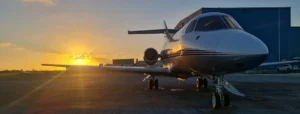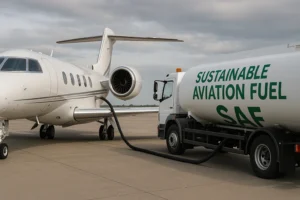Private aviation is experiencing a transformation driven by cutting-edge advancements in technology. The integration of artificial intelligence, smarter avionics, and autonomous flight systems is shaping a future that prioritizes precision, safety, and efficiency. These innovations are not only refining the operational side of aviation but also redefining how time and convenience are optimized for those who value discretion and seamless experiences.
Smarter Avionics: Precision in Every Flight
Advanced avionics are reshaping the way pilots interact with aircraft systems. Tools like synthetic vision systems (SVS) and predictive navigation provide unmatched accuracy, even in complex conditions. These systems create a 3D representation of the flight environment, enhancing situational awareness and ensuring safe decision-making regardless of weather or visibility.
Meanwhile, real-time data integration allows pilots to adjust routes dynamically, avoiding disruptions and reducing flight durations. The aircraft operates as a unified, intelligent system where every detail—from turbulence management to landing precision—is optimized for reliability and confidence.
Artificial Intelligence: Quietly Reshaping the Experience
AI is the invisible force driving much of this transformation. From operations to onboard efficiency, it works behind the scenes to simplify complex processes:
- Maintenance Predictability: AI detects potential mechanical issues before they arise, reducing downtime and ensuring that every flight operates at peak readiness.
- Route Optimization: Intelligent systems analyze air traffic and weather patterns to select the most efficient path, saving time and fuel without compromising safety.
What makes these advancements remarkable is how unobtrusive they are. The goal isn’t to overwhelm users with technology but to refine every aspect of the journey in ways that feel natural and effortless.
Autonomy and the Future of Flight
The development of autonomous flight systems is steadily advancing, with aircraft now capable of managing many aspects of navigation, takeoff, and landing autonomously. While human oversight remains essential, the technology already minimizes risks associated with human error and enhances operational consistency.
As this technology matures, private aviation stands to benefit from even smoother flights, reduced pilot workload, and greater reliability. The transition to partial autonomy is an evolution rather than a disruption, and its presence is already influencing how flights are planned and executed today.
Aviation Moving Toward a Sustainable Horizon
Beyond operational advancements, the industry is responding to the growing demand for sustainability. Artificial intelligence and smart routing contribute significantly by optimizing fuel usage and minimizing emissions. Combined with innovations like sustainable aviation fuels (SAF), private aviation is aligning itself with responsible practices without sacrificing performance.
What This Means for Private Flyers
For those who rely on private aviation, these advancements represent a significant shift toward an elevated experience—one that values time, efficiency, and trust. Behind every seamless flight lies a system of technologies working quietly to anticipate needs and eliminate inefficiencies. This progress isn’t about adding complexity but about removing barriers, ensuring that every journey is as refined and predictable as possible.
Technology in private aviation isn’t a revolution—it’s an evolution. Each step forward builds on decades of refinement, making every aspect of flying more intuitive, reliable, and aligned with the expectations of those who value precision and discretion above all else.







